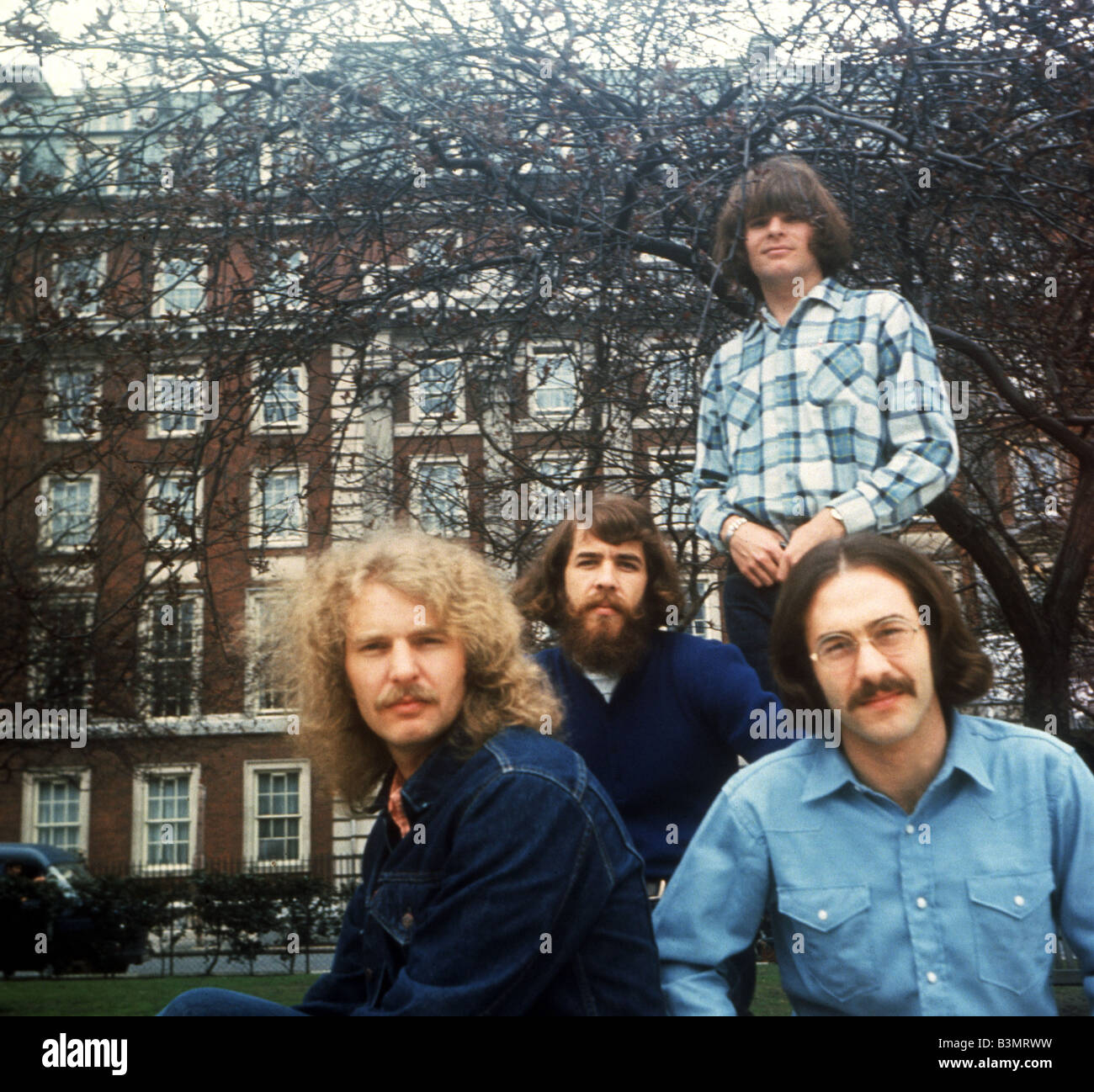
A slow, one-chord sway that steadies the room—Creedence Clearwater Revival’s “Feelin’ Blue” is the sound of letting the day talk through your hands until the ache turns into a groove.
Here are the anchors up front. “Feelin’ Blue” is a deep cut—not a single—from Willy and the Poor Boys (Fantasy), released October 29, 1969. It closes side one (track 5) and runs about 5:05–5:06, written and produced by John Fogerty and recorded at Wally Heider, Studio C (San Francisco). The album, not this track, carried the charts: U.S. Billboard 200 No. 3 with later RIAA 2× Platinum certification.
Part of the song’s quiet fascination is how long it lived in Fogerty’s notebook. He’d had the kernel since 1967, tried to wedge it onto Bayou Country, and only found the shape in ’69. The result is CCR at their most austere: a near-one-chord blues that depends on touch, pocket, and trust more than harmonic fireworks. You can even hear how the band dovetails the fade of the jug-band instrumental “Poorboy Shuffle” straight into this tune—as if loosening their shoulders before stepping into the long, low haul.
Spin it and the feel explains everything. Doug Clifford keeps a dry, unhurried trot on the snare; Stu Cook walks the bass forward without crowding; Tom Fogerty saws the rhythm steady while John answers his own lines with small, flinty guitar phrases. Nothing fusses; nothing blinks. This is the Wally Heider creed the band nailed in 1969—get the song rehearsed, trust the room, and print what the players do when nobody’s showboating. It’s music built for kitchens, garages, and late drives: modest tempo, lots of air, and a pocket you can live inside for five minutes.
If you’re of an age to remember console stereos and album sides, the sequencing still feels right. Side one starts with “Down on the Corner,” bumps through “It Came Out of the Sky” and “Cotton Fields,” loosens with “Poorboy Shuffle,” and then settles into “Feelin’ Blue.” In that slot, it works like a long exhale—three sunny snapshots followed by a dusky confession that doesn’t need words to say what the day took out of you. Then you flip the record and get the fire and bite on side two (“Fortunate Son,” “Don’t Look Now,” “The Midnight Special,” and beyond). That hinge is part of why Willy and the Poor Boys feels like a journey, not just a pile of hits.
What’s the meaning, especially to older ears? The lyric is spare; the message is physical. The band locks into a sway that says: stay upright, keep moving, let the rhythm carry what the words can’t. Fogerty has called so much of CCR a translation of everyday American sights and habits into playable feeling; here it’s the sound of honest fatigue becoming companionship. No sermon, no self-pity—just the human ritual of turning blue into motion until it lightens a shade.
There’s also the small romance of craft. A five-minute groove like this is harder than it looks. You need a drummer who can make “simple” mean certain, a bassist who knows how to nudge without leaning, guitars that answer and then get out of the way. That’s why fans love this cut even though it never saw a 45: it’s CCR showing their working-man discipline, the same ethic that made the radio rockets fly, applied to a track that asks for patience instead of payoff. (Fun footnote for the trainspotters: by most accounts the band never played it live, which helps explain why it still feels like a studio spell you step into rather than a stage number.)
For your scrapbook—tidy and true:
- Artist: Creedence Clearwater Revival
- Song: “Feelin’ Blue” — side one closer (track 5); ~5:06; writer/producer: John Fogerty.
- Album: Willy and the Poor Boys (Fantasy; released Oct 29, 1969); recorded at Wally Heider Studio C (SF). Album peaks: US Billboard 200 No. 3; RIAA 2× Platinum.
- Backstory bits: idea dating to 1967; intended at one point for Bayou Country; cross-fade from “Poorboy Shuffle” into “Feelin’ Blue.” Live performance: none documented by CCR or Fogerty.
Play it tonight when you want the room steadied, not stirred. The groove won’t fix anything; it doesn’t try. It will stand there with you—shoulder to shoulder—until the color of the evening softens and the house feels like home again. That’s the quiet gift of “Feelin’ Blue”: a small, sturdy rhythm that remembers how we get through.